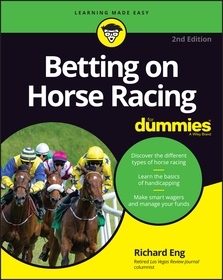
Machine Learning, Animated
Series: Chapman & Hall/CRC Machine Learning & Pattern Recognition;
- Publisher's listprice GBP 74.99
-
35 826 Ft (34 120 Ft + 5% VAT)
The price is estimated because at the time of ordering we do not know what conversion rates will apply to HUF / product currency when the book arrives. In case HUF is weaker, the price increases slightly, in case HUF is stronger, the price goes lower slightly.
- Discount 20% (cc. 7 165 Ft off)
- Discounted price 28 661 Ft (27 296 Ft + 5% VAT)
Subcribe now and take benefit of a favourable price.
Subscribe
35 826 Ft

Availability
Not yet published.
Why don't you give exact delivery time?
Delivery time is estimated on our previous experiences. We give estimations only, because we order from outside Hungary, and the delivery time mainly depends on how quickly the publisher supplies the book. Faster or slower deliveries both happen, but we do our best to supply as quickly as possible.
Product details:
- Edition number 1
- Publisher Chapman and Hall
- Date of Publication 28 November 2025
- ISBN 9781032462134
- Binding Paperback
- No. of pages464 pages
- Size 254x178 mm
- Language English
- Illustrations 45 Illustrations, color; 4 Halftones, color; 41 Line drawings, color 700
Categories
Short description:
The release of ChatGPT has kicked off an arms race in Machine Learning (ML), however ML has also been described as a black box and very hard to understand. This book eases you into basic ML concepts and summarises the learning process in three words: initialize, adjust and repeat.
MoreLong description:
The release of ChatGPT has kicked off an arms race in Machine Learning (ML), however ML has also been described as a black box and very hard to understand. Machine Learning, Animated eases you into basic ML concepts and summarizes the learning process in three words: initialize, adjust and repeat. This is illustrated step by step with animation to show how machines learn: from initial parameter values to adjusting each step, to the final converged parameters and predictions.
This book teaches readers to create their own neural networks with dense and convolutional layers, and use them to make binary and multi-category classifications. Readers will learn how to build deep learning game strategies and combine this with reinforcement learning, witnessing AI achieve super-human performance in Atari games such as Breakout, Space Invaders, Seaquest and Beam Rider.
Written in a clear and concise style, illustrated with animations and images, this book is particularly appealing to readers with no background in computer science, mathematics or statistics.
Access the book's repository at: https://github.com/markhliu/MLA
Table of Contents:
List of Figures
Preface
Section I Installing Python and Learning Animations
1. Installing Anaconda and Jupyter Notebook
2. Creating Animations
Section II Machine Learning Basics
3. Machine Learning: An Overview
4. Gradient Descent - Where the Magic Happens
5. Introduction to Neural Networks
6. Activation Functions
Section III Binary and Multi-Category Classifications
7. Binary Classifications
8. Convolutional Neural Networks
9. Multi-Category Image Classifications
Section IV Developing Deep Learning Game Strategies
10. Deep Learning Game Strategies
11. Deep Learning in the Cart Pole Game
12. Deep Learning in Multi-Player Games
13. Deep Learning in Connect Four
Section V Reinforcement Learning
14. Introduction to Reinforcement Learning
15. Q-Learning with Continuous States
16. Solving Real-World Problems with Machine Learning
Section VI Deep Reinforcement Learning
17. Deep Q-Learning
18. Policy-Based Deep Reinforcement Learning
19. The Policy Gradient Method in Breakout
20. Double Deep Q-Learning
21. Space Invaders with Double Deep Q-Learning
22. Scaling Up Double Deep Q-Learning
Bibliography
More







